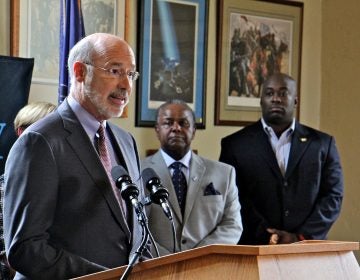More girls in the engineering career pipeline makes the world a better place
We are nearing that tipping point where women no longer feel isolated or lonely. We want to make it “normal” for women to choose engineering.

(Freebird7977/Big Stock Photo)
In this increasingly complex world, we need everyone — women and men — to solve problems. We are at a pivotal moment in time as society recognizes the need for gender equity and the critical role that women must play in making the world a better place.
Sadly, women are still underrepresented in many STEM professions and in STEM fields at many colleges and universities. When women enroll in STEM programs, they persist to graduation with few of them dropping out. Over time, the accumulation of discouragement keeps many girls from entering the pipeline. Lack of female role models, limited encouragement for girls to engage in math and science, and a lack of understanding about what engineers do and the impact they have in improving the quality of life for people worldwide are all impediments to young girls considering an education and a career in engineering.
Institutions of higher education can serve as leaders in changing this dynamic with a multi-pronged approach that includes increasing the number of female faculty to serve as role models for students, implementing mentorship programs, and spearheading outreach programs designed to get girls in to the pipeline — and keep them there.
Female faculty serve as crucial role models and mentors for girls in engineering; however, the national average for female engineering faculty is only 16 percent. At Villanova University’s College of Engineering, where I teach, leadership has committed to increasing our percentage of female faculty. Ten years ago, only 11 percent of our engineering faculty were women. In 2016, the university ranked 13th nationally with 27 percent of tenure-track faculty being female.
Increasing the number of female faculty makes a clear difference in the enrollment of female students by normalizing the presence of women in engineering. Over the past 10 years the College of Engineering has increased its percentage of female students from 20 percent in 2006 to 28 percent in 2016. We are striving for this percentage to match the university’s entire population, but in comparison with the national numbers for engineering graduates — 21 percent female in 2016 — we are proud to be moving in the right direction. When we’ve asked our female students what they like about our engineering program, they report “I feel normal, like I belong here.”
In addition to mentorship from female faculty, connecting students with mentors outside the university can help them idealize their careers post-graduation. Based on recent research, we knew that young women respond better when paired with a female mentor. Fortunately, when searching for female mentors for a mandatory professional development program for engineering students, the response rate was outstanding. Almost 35 percent of our mentors are women, which enabled us to assign every female student to a female mentor.
Ultimately, for all of these efforts to make a difference, we need to increase the number of young women in the pipeline by reaching out to girls who may be interested in STEM but could use some encouragement and direction. Villanova’s outreach programs are exposing girls to the world of engineering at crucial times in the development of their academic interests. The goal is to fill the STEM pipeline with girls. If those girls choose a STEM major in college, any college, we should consider that a success.
My first introduction to engineering was at a program geared toward seventh-grade girls held at Stevens Institute of Technology. While I did not attend Stevens for college, I would hope that they would consider me a successful graduate of their middle-school programming! When I started at Villanova in 1999, I was the first female faculty member in civil and environmental engineering; now women comprise seven out of the 15 tenured/tenure-track faculty. Last year, I assumed the role of associate dean for academic affairs in the College of Engineering, working closely with our four department chairs, two of whom are women, to ensure that everyone feels welcome in the college.
Engineering is changing for the better. Some studies report that change for any group occurs when that group reaches a critical mass of 20 to 30 percent. We are nearing that tipping point where women no longer feel isolated or lonely. We want to make it “normal” for women to choose engineering. Outreach programs are effective in convincing girls that they belong in engineering. We need a full pipeline. The world is depending on it.
—
Andrea Welker is associate dean for academic affairs and professor of civil and environmental engineering at Villanova University College of Engineering.
WHYY is your source for fact-based, in-depth journalism and information. As a nonprofit organization, we rely on financial support from readers like you. Please give today.




